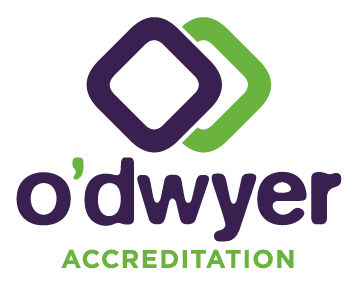Danger ahead: warning signs for NATA Accredited Labs

When a lab has its NATA accreditation suspended, it usually comes as a huge shock. But there are warning signs for poor assessment outcomes. You can determine whether there are issues that you should address before NATA arrives.
Some of the red flags in laboratories that have poor assessment outcomes or have their accreditation suspended:
![]() Senior technical staff have left and have not been replaced.
Senior technical staff have left and have not been replaced.
![]() The laboratory is chronically short-staffed. This may be due to illness or other unavoidable factors.
The laboratory is chronically short-staffed. This may be due to illness or other unavoidable factors.
![]() Business has expanded but staff training and resources are lagging. No time to train the front-line staff and update resources for quality management and internal audits.
Business has expanded but staff training and resources are lagging. No time to train the front-line staff and update resources for quality management and internal audits.
![]() Lots of phone calls from customers.
Lots of phone calls from customers.
![]() Technical problems that everyone is aware of remain in the lab.
Technical problems that everyone is aware of remain in the lab.
![]() Staff members are putting off internal audits due to busy schedules.
Staff members are putting off internal audits due to busy schedules.
![]() New NATA accreditation requirements, but keep delaying working out how they apply.
New NATA accreditation requirements, but keep delaying working out how they apply.
![]() Quality-assurance systems spread too thinly: NATA accreditation covers many different labs, some of which managers have never seen. In some cases, they haven’t even met the staff members.
Quality-assurance systems spread too thinly: NATA accreditation covers many different labs, some of which managers have never seen. In some cases, they haven’t even met the staff members.
![]() Nobody knows where to find a copy of the last NATA assessment/surveillance report.
Nobody knows where to find a copy of the last NATA assessment/surveillance report.
![]() Last but not least – if you have had the same NATA lead assessor for many years and now a new one is headed your way.
Last but not least – if you have had the same NATA lead assessor for many years and now a new one is headed your way.
No one of these problems alone spells doom for your accreditation. But if you are saying “yes” to two or more of them, this is a warning sign that you need to slow right down and take stock.
How to protect your NATA accreditation
Take stock and review
Some labs are caught off guard by a sudden suspension of their accreditation. Others may have had a fair idea that things were rough around the edges and were just hoping for the best. There are things you can do to avoid both of these scenarios and protect your accreditation status.
If you think your laboratory may have a problem, take stock of your whole organisation (the accredited part at least). The Management Review clauses in ISO17025, ISO15189, and most other “quality” standards are the best place to start. It covers all key aspects of a laboratory quality system. Add in financial indicators and you should have a full review of your operation. Don’t just invent things to put under each category. Do try to include any relevant information that you can think of. And remember to record what is going well.
Decide which items you need to action and develop plans for each one. Don’t aim too high – you need a good enough system, not a perfect one. Keep the bigger picture in mind. Being too narrow in your focus could waste valuable time. Start with the things that are clear technical problems, affecting the validity of your test results.
Implement changes
Implement the changes one at a time so that you can see how they work. Involve all relevant stakeholders in the implementation process.
Measure the improvements and keep records. Make sure you have data from the process both before and after the improvement. This can help appease staff unhappy with the change, management asking about the cost, and of course, accreditation bodies.
Adopt the changes if you are happy with the results and management approves. Update SOPs/procedures and train staff.
Use your internal audit program to make sure that the improvements “stick”.
Get the auditors to look at the new process in detail. Choose internal auditors who understand NATA’s requirements and will give you frank and fearless advice.
NATA suspension procedures
NATA’s criteria for deciding when a laboratory should be suspended are kept quite vague. Based on the Accreditation Procedures and the Rules (mainly 40 and 41), NATA can suspend “an accredited facility” if it: “at any time fails to comply with any condition for continuance of its accreditation”. It sounds scary, but normally the non-conformances have to be quite serious and/or systematic before NATA will move to suspend accreditation.
There are three main ways that your laboratory or site could have accreditation suspended:
Failing a NATA assessment
Failing a NATA assessment (or surveillance visit) is every lab manager’s nightmare. Yet it can happen to labs that have always thought themselves to be completely “up-to-scratch”, as well as labs that know there are problems. It’s always a shock when it happens.
You will (hopefully) realise during the assessment that things aren’t going too well, then receive a rather long assessment report. The NATA lead auditor will probably warn you that the accreditation might be suspended.
Advice from an external body
NATA can act on information received from a range of external agencies such as RCPA, RMS, the Victorian Government and many more. It can then put in place a process that leads to the suspension of your laboratory accreditation.
Choosing suspension of accreditation
When you know that your laboratory cannot meet the accreditation criteria, and can manage without accreditation for a while, you can choose to have the accreditation suspended. Make sure you get a written agreement from NATA first as to what steps you will need to take to regain accreditation.
Avoid suspension at all costs
If NATA decides a laboratory is not meeting the criteria for accreditation, it will send a notice asking the organisation to demonstrate otherwise.
At this stage, the horse has probably bolted. Very few appeals to the suspension process succeed.
From our experience with several laboratories, once you are subject to an involuntary suspension, correspondence with NATA can become quite bewildering and difficult to interpret. It can seem impossible to come up with a corrective action that will satisfy them. Certainly, there is no fast way back.
The best avenue is to avoid getting into this situation in the first place. If you want to keep your systems on track but need help from auditors with NATA know-how, contact O’Dwyer Accreditation. Practical experience with NATA accreditation is our game.


